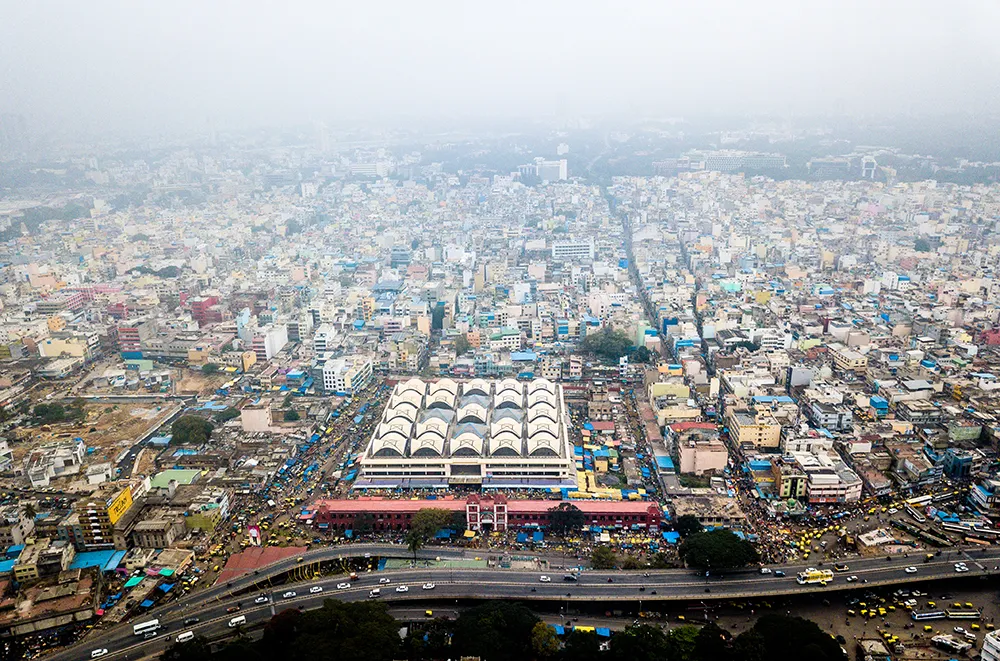Researchers warn that driverless vehicles could intensify car use, reducing or even eliminating promised energy savings and environmental benefits.
Development of autonomous driving systems has accelerated rapidly since the unveiling of Google’s driverless car in 2012, and energy efficiency due to improved traffic flow has been touted as one of the technology’s key advantages.
However, new research by scientists from the University of Leeds, University of Washington and Oak Ridge National Laboratory,
February 29, 2016
Read time: 4 mins
Researchers warn that driverless vehicles could intensify car use, reducing or even eliminating promised energy savings and environmental benefits.
Development of autonomous driving systems has accelerated rapidly since the unveiling of1691 Google’s driverless car in 2012, and energy efficiency due to improved traffic flow has been touted as one of the technology’s key advantages.
However, new research by scientists from the University of Leeds, University of Washington and Oak Ridge National Laboratory, says its actual impact may be complicated by how the technology changes our relationship with our cars.
The study uses analysis of self-driving technology combined with data on car and truck use, driver licences and vehicle running costs to model the impact on energy demand of various levels of automation on US roads by 2050.
It identifies several efficiency benefits of self-driving cars and predicts ranges of likely energy impacts, depending on the extent of adoption of the technology and other factors:
• More efficient computer-directed driving styles (0 to 20 per cent reduction in energy use)
• Improved traffic flow and reduced jams because of coordination between vehicles (0 to four per cent reduction)
• Platooning of automated vehicles driving very close together to create aerodynamic savings (four per cent to 25 per cent reduction)
• Reduced crash risks mean that cars can be lighter (five per cent to 23 per cent reduction)
• Less emphasis from car buyers on high performance (five per cent to 23 per cent reduction)
But the study also predicts that the very attractiveness of self-driving technology could reduce or even outweigh the efficiency gains.
It estimates a five per cent to 60 per cent increase in car energy consumption due to people choosing to use highly automated cars in situations where they would have previously taken alternative transport such as trains or planes.
The study also predicts that people who currently find it difficult or impossible to drive, such as the elderly or some people with disabilities will have increased access to road transport with the advent of the new systems, resulting in an estimated 2 per cent to 10 per cent increase in road energy use for personal travel.
Possible higher speed limits because of the improved safety of autonomous cars and demand for heavy extra equipment in driverless cars such as TV screens and computers might also tend to reduce efficiency savings.
A major uncertainty is the effect of autonomous driving technology on car sharing. The technology could allow vehicles to move independently between different users and therefore not only increase sharing but possibly also make it easier for users to match trip types to car types.
Instead of using one car for all journeys, users might be able to use a shared, smaller car for a commute and a larger one for family leisure trips, for example. The report authors say these factors could reduce energy consumption by 21 per cent to 45 per cent.
The study says many of the energy benefits of self-driving technology could be delivered by systems that still require the human driver to pay attention to the road and therefore do not radically alter transport decision making.
The authors suggest that policymakers could focus less on accelerating the introduction of complete automation and more on promoting aspects of automation with positive environmental outcomes.
For instance, regulators could encourage standardisation of car networking protocols to allow vehicles to communicate with each other on the road and therefore deliver benefits such as platooning.
The researchers warn that, if a high level of automation becomes the norm, it may be necessary to financially intervene in transport decisions. For example, self-driving cars’ navigation and communication systems could be used as a basis for road pricing schemes to control congestion and reduce overall travel demand.
The research, published today in the journal Transportation Research Part A, was led by Dr Zia Wadud, associate professor in the University of Leeds’ Faculty of Engineering and a research group leader in the University’s Institute for Transport Studies.
Development of autonomous driving systems has accelerated rapidly since the unveiling of
However, new research by scientists from the University of Leeds, University of Washington and Oak Ridge National Laboratory, says its actual impact may be complicated by how the technology changes our relationship with our cars.
The study uses analysis of self-driving technology combined with data on car and truck use, driver licences and vehicle running costs to model the impact on energy demand of various levels of automation on US roads by 2050.
It identifies several efficiency benefits of self-driving cars and predicts ranges of likely energy impacts, depending on the extent of adoption of the technology and other factors:
• More efficient computer-directed driving styles (0 to 20 per cent reduction in energy use)
• Improved traffic flow and reduced jams because of coordination between vehicles (0 to four per cent reduction)
• Platooning of automated vehicles driving very close together to create aerodynamic savings (four per cent to 25 per cent reduction)
• Reduced crash risks mean that cars can be lighter (five per cent to 23 per cent reduction)
• Less emphasis from car buyers on high performance (five per cent to 23 per cent reduction)
But the study also predicts that the very attractiveness of self-driving technology could reduce or even outweigh the efficiency gains.
It estimates a five per cent to 60 per cent increase in car energy consumption due to people choosing to use highly automated cars in situations where they would have previously taken alternative transport such as trains or planes.
The study also predicts that people who currently find it difficult or impossible to drive, such as the elderly or some people with disabilities will have increased access to road transport with the advent of the new systems, resulting in an estimated 2 per cent to 10 per cent increase in road energy use for personal travel.
Possible higher speed limits because of the improved safety of autonomous cars and demand for heavy extra equipment in driverless cars such as TV screens and computers might also tend to reduce efficiency savings.
A major uncertainty is the effect of autonomous driving technology on car sharing. The technology could allow vehicles to move independently between different users and therefore not only increase sharing but possibly also make it easier for users to match trip types to car types.
Instead of using one car for all journeys, users might be able to use a shared, smaller car for a commute and a larger one for family leisure trips, for example. The report authors say these factors could reduce energy consumption by 21 per cent to 45 per cent.
The study says many of the energy benefits of self-driving technology could be delivered by systems that still require the human driver to pay attention to the road and therefore do not radically alter transport decision making.
The authors suggest that policymakers could focus less on accelerating the introduction of complete automation and more on promoting aspects of automation with positive environmental outcomes.
For instance, regulators could encourage standardisation of car networking protocols to allow vehicles to communicate with each other on the road and therefore deliver benefits such as platooning.
The researchers warn that, if a high level of automation becomes the norm, it may be necessary to financially intervene in transport decisions. For example, self-driving cars’ navigation and communication systems could be used as a basis for road pricing schemes to control congestion and reduce overall travel demand.
The research, published today in the journal Transportation Research Part A, was led by Dr Zia Wadud, associate professor in the University of Leeds’ Faculty of Engineering and a research group leader in the University’s Institute for Transport Studies.










